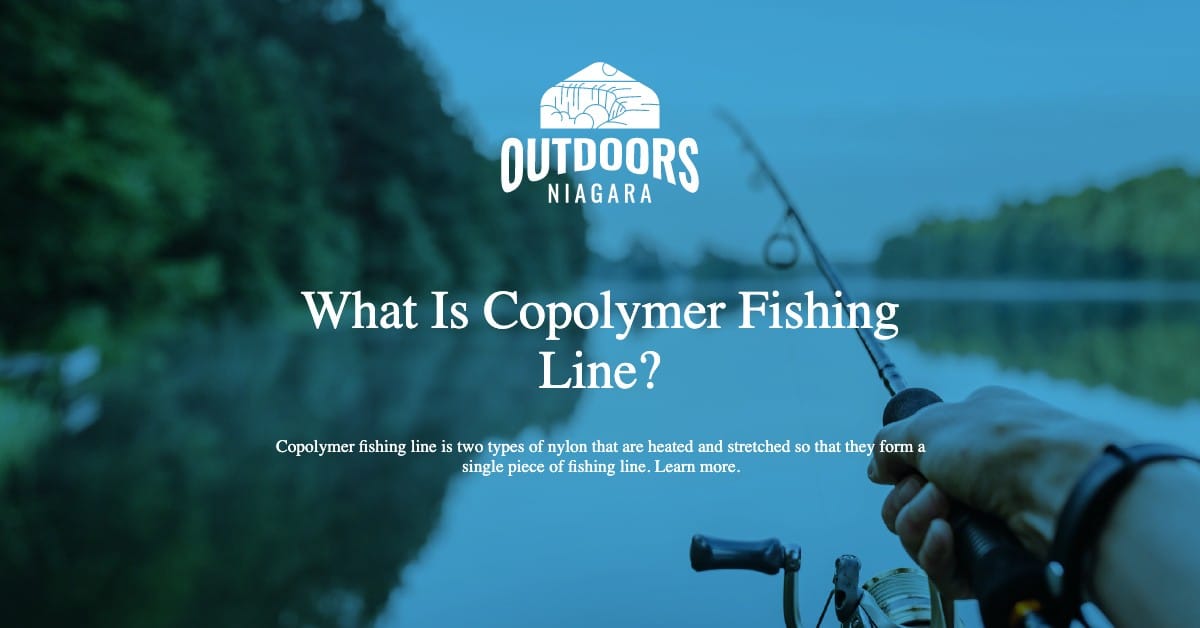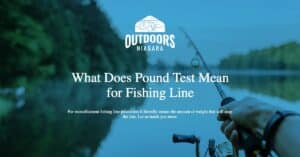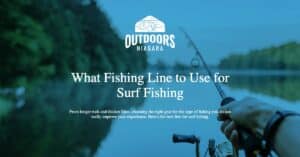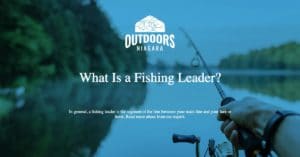Copolymer fishing line is two types of nylon that are heated and stretched so that they form a single piece of fishing line.
Monofilament fishing line, on the other hand, is a single piece of nylon that is stretched to produce the correct diameter.
So, one difference between mono and copolymer is the number of nylon strands used to create the fishing line.
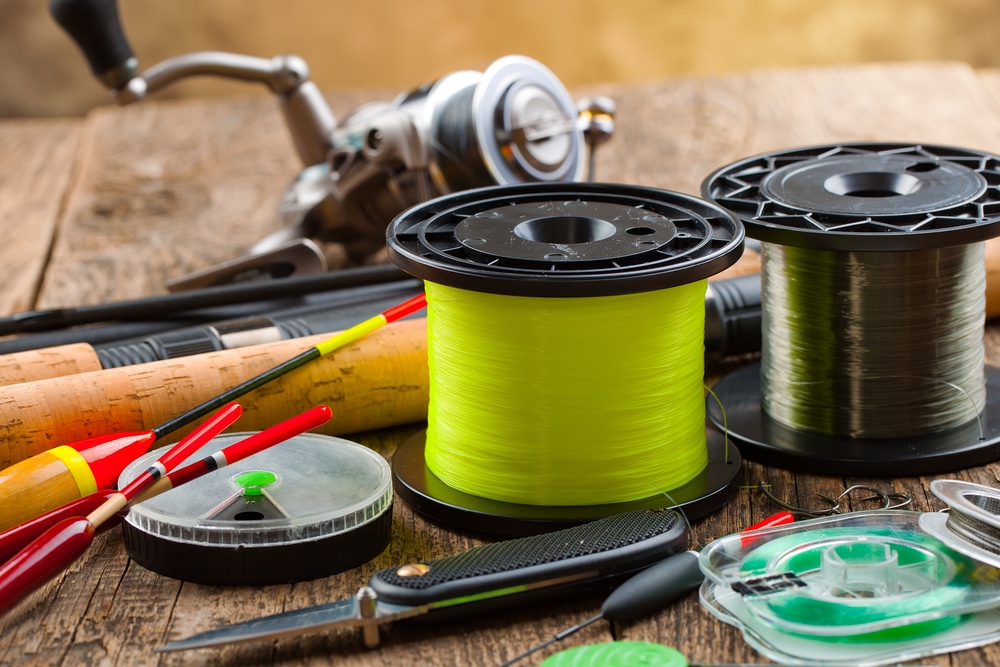
Contents
Is Copolymer Line Any Good?
While a new type of fishing line, copolymer is an excellent option for anyone who loves to fish.
In comparison to other types of fishing line, copolymer is stronger, more resistant to abrasion, and does not have a lot of memory.
All three of those attributes make copolymer an excellent choice for fishing and fly-fishing.
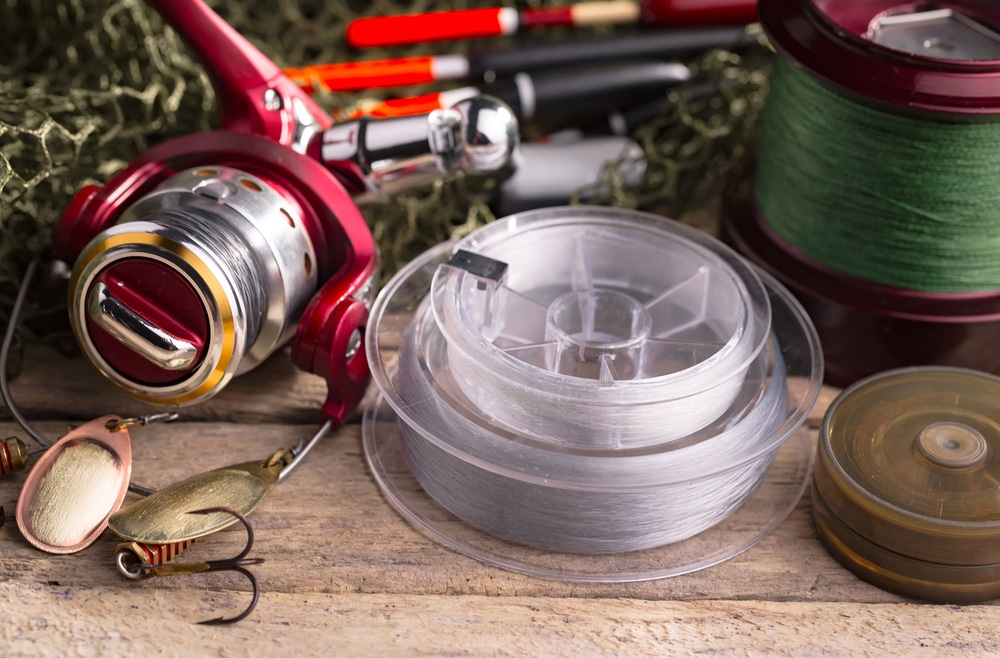
How Strong Is Copolymer Fishing Line?
Because fishing line is rated in Pound Test the actual strength of the line is less important than a question.
Copolymer line is much stronger than monofilament and fluorocarbon lines.
What you will notice is that due to its higher strength that the same 12-pound test copolymer line will have a smaller diameter than both mono and fluorocarbon lines.
That means that you can fit more copolymer line on your reel than either mono or fluorocarbon lines.
What Are the Advantages of Copolymer Fishing Line?
Copolymer fishing line has a handful of advantages that make it a game-changer for all levels of fishing and for fishing in all environments.
Those include its remarkable strength. Copolymer fishing line is much stronger than both monofilament and fluorocarbon fishing lines. The reason for this is that a copolymer fishing line is made using two types of nylon fibers which are combined into one line. Mono and Fluorocarbon lines come from a single polymer.
Copolymer fishing line is resistant to damage such as abrasion and nicking, both of which can happen in fast moving water, rough water, and when you fish around structures.
Copolymer fishing line also absorbs less water making it more durable in sunlight. Water retention leads to sun damage if the line is left in the sun for long periods of time.
Stretch is a big consideration when choosing a fishing line. Copolymer fishing line has some stretch but not much.
It is just enough give to help absorb the power of a big fish battling the hook, but not enough to cause the line to weaken.
Copolymer fishing line in equal pound tests as mono of fluorocarbon lines has a thinner diameter making it easier to add more line to your standard fishing reel.
Lastly, the copolymer fishing line has reduced glare in the water.
It is refractive, which makes it less visible to fish and that is a positive when you fish in highly fished waters where the fish are more experienced to line and lure or line and fly.
What Is the Difference Between Copolymer and Monofilament Fishing Line?
The first difference between copolymer fishing line and monofilament fishing line is in the way the two lines are manufactured.
Copolymer fishing line is made by combining two types of nylon threads while monofilament is manufactured using a single nylon thread.
By pairing two polymers, copolymer fishing line is able to enhance line strength while decreasing line diameter.
In comparison to monofilament lines of equal pound-test ratings, you will find that copolymer fishing line is thinner, but stronger than mono.
Monofilament line is more visible in the water than copolymer fishing line.
Mono absorbs light whereas copolymer fishing line refracts light.
In addition, the thinner diameter of copolymer fishing line also helps to make it less visible too.
Which Is Better Fluorocarbon or Copolymer?
Copolymer fishing line and fluorocarbon fishing line are very similar in some aspects.
Both are strong, though copolymer is stronger. Both refract light making it harder for the line to be visible in the water.
Both have low water absorption, which makes the line behave the same above water as below.
Flurocarbon is resistant to abrasion but not as much as copolymer line.
If I had to choose one line over the other, I would most likely choose the copolymer line over fluorocarbon line.
If you are shopping based on price points, then expect to pay more for copolymer fishing line over fluorocarbon.
Is the difference in strength worth the extra dollar spent? The answer depends on how much you fish.
If you are on the water two or more times per week, I’d invest in the copolymer line over the fluorocarbon.
Also to note, if you are fishing in areas where the line may get more beat up the copolymer line is the best option.
For the average angler, fluorcarbon may be a better deal and you may not notice the difference in strength between the two as you are less likely to need heavy-duty line.
Is Copolymer Line Good for Trout Fishing?
Copolymer fishing line is good for trout fishing.
The thinness of the line matched with its superior strength makes it a good choice for trout fishing both on a spinning rod and fly rod.
Also, like fluorocarbon fishing line, copolymer line refracts light making it more difficult to see while it is in the water.
That’s an added bonus for trout fishing.
When you pair the thinner diameter and stronger stength along with the line’s ability to refact light, you have a winner for trout fishing.
Do Copolymer Lines Float?
Copolymer fishing line will float or sink. If you need a copolymer fishing line to float you buy the copolymer line that has monofilament in it.
The process of making copolymer – co meaning two – takes two types of nylon and combines them into a single line.
This is not the same process as braided line, it is two types of nylon that becomes a single unit.
If the second nylon polymer is monofilament, the line will float.
If the second polymer is fluorcarbon, the line will sink.
Technically, fluorcarbon is not a nylon but it is a polymer.
Is Copolymer a Nylon?
Copolymer fishing line is two types of nylon that are heated and formed into a single unit.
While the fishing line is one unit made from two nylon polymers, it is not the same as braided line.
Braided line twines many smaller lines into a flat, single braid.
Copolymer fishing line is a single strand made from two different types of nylon material.
When the copolymer is nylon plus fluorocarbon, it contains nylon + fluorcarbon. Fluorocarbon is not nylon, but it is a polymer.
Is Copolymer Line Good for Topwater?
Copolymer fishing line can be good for topwater or as a sinking line.
While that seems to indicate that Copolymer fishing line is good for both, you have to understand that copolymer lines can be either a floating line or a sinking line, but not both.
To get Copolymer fishing line to float you have to choose the right type of Copolymer fishing line.
Copolymer line is comprised of two types of polymers – usally, two types of nylon polymers.
When one of those nylon polymers is monfilament, then the line floats.
If you want to set up the rod as a top-water rod, you will need to choose the type of Copolymer fishing line that contains monofilament polymers.
On the other hand, if you want the line to sink, you will choose the Copolymer fishing line that has a fluorcarbon polymer rather than a monofilament polymer.

